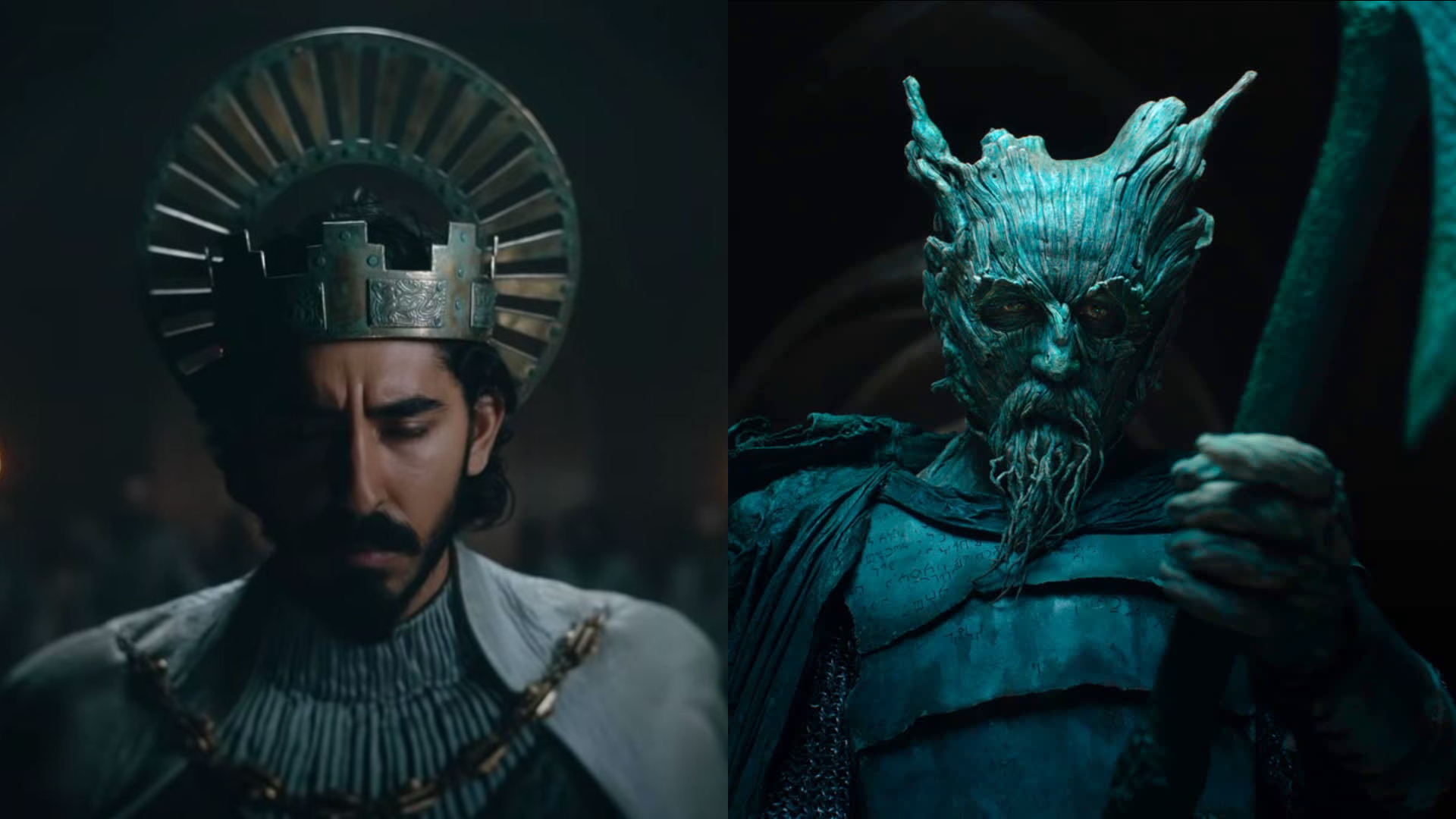Warning: This post contains spoilers for the ending of The Green Knight.
The Green Knight is A-24’s much-hyped foray into the realm of Arthurian fantasy, a re-telling of the 14th-century poem Sir Gawain and the Green Knight, directed by David Lowery and starring Dev Patel as Sir Gawain.
Adapted from the original, anonymously-written source material by the director himself, it both takes inspiration from the original myth-making but interrogates and deepens its and interior world, along with heady themes about the price of power, the relationship between mothers and sons and the price some men pay for their honour.
In the film, Gawain (Patel) a member of King Arthur’s court who must set out on a quest to face The Green Knight (voiced by The VVitch’s Ralph Ineson) after accepting a challenge from the supernatural figure one year earlier. The bargain had been that whatever blow Gawain dealt to the Green Knight, he could match. Gawain makes the unfortunate decision to behead the Knight, so knows his journey must surely end in his own death.
Or…does it? Well, that all depends on who you ask. The Green Knight definitely moves away from the original poem’s more hopeful and easily solved ending (The Knight was just…some guy! Morgan Le Fey was involved! It was all a trick!) by actually having Gawain face up to the Green Knight’s sword.
After an extended flash-forward sequence detailing what would happen if Gawain negates on the bargain (he becomes king of Camelot but the kingdom eventually, inevitably, falls), he decides to accept his fate, abandoning the magical green girdle that could protect him, but the film ends before we find out if the Knight truly does kill him with a cut to black, Sopranos style.
Speaking to Vanity Fair, David Lowery explains how he wanted to change the original ending of the story, to legitimise the Green Knight’s challenge to Gawain but to also make Gawain’s embracing of his chivalric nature “a happy ending” in many ways.
“That’s a happy ending. He faces his fate bravely, and there’s honor and integrity in that,” the writer said. “But that doesn’t mean that he’s dead, he’s killed. He received the blow that he was dealt, and all is set right within the universe of the film.”
Apparently, there was also a cut of the film with a more “definitive” ending, but David decided to leave it more ambiguous, since “if people were to watch a movie in which Dev Patel gets beheaded at the end, they probably would like to leave the theater feeling differently than they do with the more ambiguous version.”
Which is fair enough really, right?
Overall, if The Green Knight (and David’s admirable approach to the material) can teach us anything, it’s that the best Arthurian adaptions come from writers and directors who are willing to not only change the parameters of the original stories, but also find new reasons for these stories to still exist and endure.
